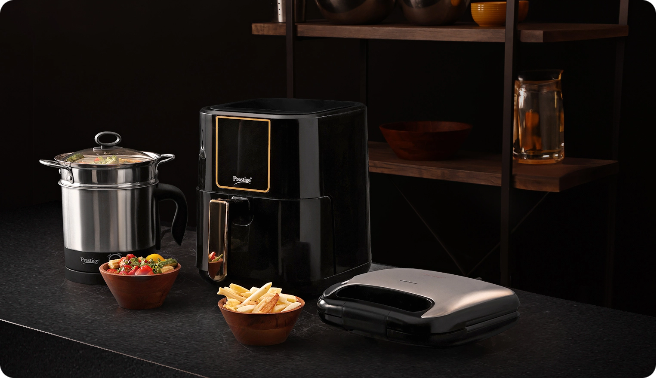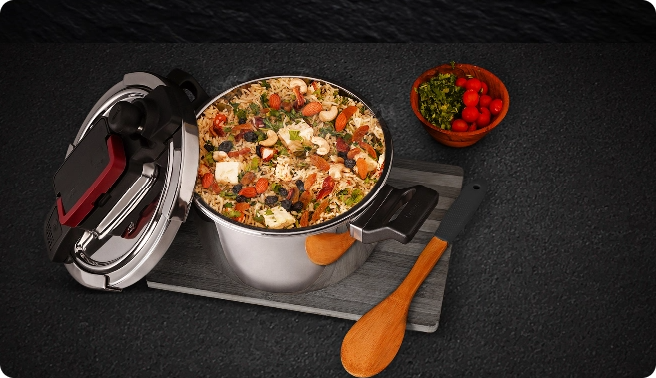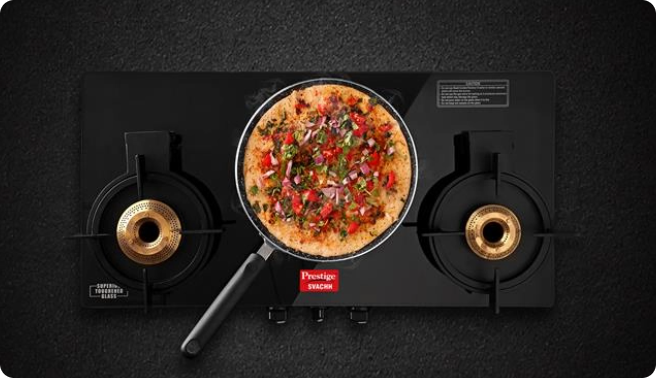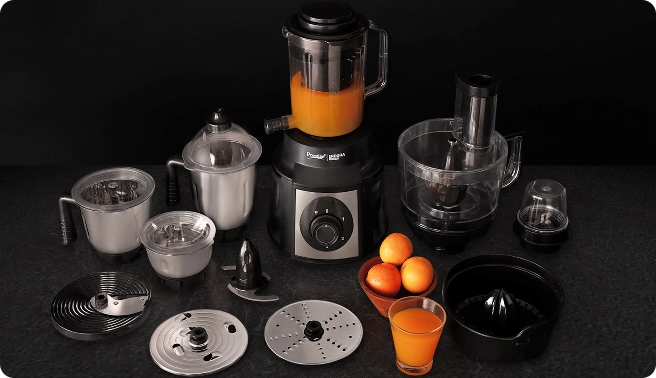Introduction to Gas Stoves and Gas Hobs
When it comes to the world of kitchen appliances, the options seem endless. Among the most essential and useful of them are gas stoves and gas hobs. Although gas stoves and gas hobs have similar basic functions of providing flame-based cooking, they serve unique needs to fit different styles and cooking preferences. While gas stoves are the conventional kitchen appliances, gas hobs are modern day marvels known for their advanced features and aesthetic appearance.
However, one may often get confused in deciding which one is better. Since gas stoves or gas hobs are generally purchased for long-term use, making a correct choice becomes extremely crucial. If you don’t have the right knowledge regarding their features, you may end up purchasing the wrong item, which can ultimately cost you more money.
What is a Gas Stove?
A gas stove typically uses combustible gas to cook food either through manual or automatic ignition. They are simple to use and are quite reliable. The safety of a gas stove is among its most significant features. Their elevated structure protects them from being too near to the platform. Additionally, gas stoves are easy to install and are flexible to move with knobs controlling the flame and a gas pipe connected to the cylinder.
Gas stoves are great for a variety of kitchen layouts as well. So if you’re someone who likes relocating your kitchen equipment and changing the arrangement of your kitchen once in a while, then a gas stove can turn out to be really useful for you.
For more information you can also read Comprehensive Guide to Gas Stove
How Do Gas Stoves Work?
Gas Stoves operate by regulating the flow of gas to individual burners, igniting it to produce a controlled flame for cooking. They provide immediate heat and versatile temperature adjustments, making them an efficient cooking appliance.
Here's how Gas Stoves typically work:
- Gas Connection: Gas (either LPG from a cylinder or natural gas from a pipeline) is supplied to the stove through a connected inlet.
- Valve Control: Each burner on the gas stove has a control knob that, when turned, opens a valve. This valve regulates the amount of gas flowing to that specific burner.
- Gas-Air Mixture: As the gas passes through the valve and enters the burner head, it mixes with air from the surroundings. This creates a combustible gas-air mixture.
- Auto-Ignition: Many modern Prestige gas stoves feature an auto-ignition system (either piezoelectric or electric). When the knob is pressed and turned, it generates a spark that ignites the gas-air mixture at the burner.
- Manual Ignition: In some models or in case of auto-ignition failure, a matchstick or external lighter can be used to manually ignite the gas.
- Flame Production: Once ignited, the gas burns, producing a stable flame at the burner.
- Heat Transfer: The flame directly heats the cooking vessel placed on the burner, allowing for rapid and efficient heat transfer to the food.
- Temperature Adjustment: The size and intensity of the flame, and thus the cooking temperature, can be precisely controlled by rotating the respective burner's control knob. This adjusts the gas flow rate.
For more information you can also read Types of Gas Stoves
What is a Gas Hob?
A gas hob on the other hand is a modified gas stove with various unique features and an aesthetic appearance. It usually has a more appealing look than a gas stove, even though the functions are almost the same. However, unlike a gas stove, a gas hob is installed directly into the countertop, which gives it a sleek look and provides a clutter-free experience. It has a modern design for cooking and is simple to turn on and off.
Additionally, a gas hob comes with a bunch of advanced features such as touch controls, automatic ignition, alarm systems, safety measures, etc. which not only make your cooking experience hassle-free but also give your kitchen an all-new aesthetic look.
How Do Gas Hobs Work?
Prestige Gas Hobs, like any other gas stoves, operate by igniting a controlled flow of gas to produce a flame for cooking. They offer instant heat and precise temperature control, making them a popular choice for various cooking needs.
Here's how Gas Hobs typically work:
- Gas Supply: Natural gas or LPG (Liquefied Petroleum Gas) is supplied to the hob through a connected gas line.
- Control Knobs and Gas Flow: When you turn a control knob, it opens a valve that allows gas to flow from the supply line to the specific burner. The knob also helps regulate the gas flow, which in turn controls the flame intensity.
- Gas-Air Mixture: As the pressurized gas exits the burner, it mixes with air, creating a combustible mixture.
- Auto-Ignition: Many Prestige gas hobs feature an advanced auto-ignition system (which can be battery-operated or electric). When you turn the knob, an electric spark is generated at the burner. This spark ignites the gas-air mixture.
- Manual Ignition: Some older models or certain situations (like power outages with electric auto-ignition) might require manual ignition using a matchstick or an external lighter.
- Flame Generation: Once ignited, the gas burns, creating a visible flame at the burner.
- Heat Transfer: The flames directly heat the bottom of your cookware, providing efficient and instant heat for cooking.
- Temperature Control: By adjusting the control knob, you can increase or decrease the gas flow, thereby controlling the size and intensity of the flame, allowing for precise temperature adjustments.
Differences between a Gas Stove and a Gas Hob: Comparisons
Before choosing between a gas stove and a gas hob, it’s important to know their basic features and where they differ exactly. While a gas stove is a freestanding appliance that is easy to move, a gas hob on the other hand is a built-in appliance that is installed at a particular place on the kitchen platform. Both have their own advantages and they both cater to different needs of a consumer. Hence, learning their key differences can come quite handy if you’re planning to purchase any one of the two. So let’s take a look:
|
Features |
Gas Stove |
Gas Hob |
|
Design, Structure |
A gas stove is a portable appliance that comes with a cooktop, burners, and an integrated oven. It usually contains 4-6 burners with flame controlling knobs. They come in a variety of shapes and sizes, such as freestanding, drop-in, and slide-in types. |
A gas hob on the other hand, is a sophisticated appliance which is built-in with the kitchen countertop. It usually comes with a flat surface where the burners are integrated into the countertop. They are ideal for large kitchens and can be mounted in places such as on a built-in counter or on a kitchen island. |
|
Installation |
Since a gas stove is freestanding, you may put it anywhere in the kitchen wherever there is a gas supply. As it is not affixed to the countertop, it is quite flexible and can be relocated anywhere. |
On the contrary, since a gas hob is fitted onto the countertop, it has to have a countertop cutout made in order to get installed. It is not easily transportable and is fixed in a particular place. |
|
Usage |
Gas stoves are usually ideal for kitchens that have limited spaces, where appliances can be moved freely. It is often used in places like households and commercial kitchens. |
Due to their sophisticated appearance, gas hobs are usually suitable for contemporary kitchens that are aesthetically focused and where the countertop seamlessly integrates. They are often preferred in kitchens that have permanent layouts and a customized cabinet. |
Which One is Better, a Gas Stove or a Hob?
When it comes to deciding which one is better, a gas stove or a gas hob, the answer lies in personal preferences and your kitchen set-up. If you require a more flexible and portable appliance, then a gas stove might be a better option. A hob, however, is always your greatest option if you want to modernize and want to give it a sleek look. With its features such as auto-ignition, pre-set timers, and alarm systems, a gas hob lets off a ‘cool’ vibe. However, if your budget is the only concern, then you may consider a gas stove. The decision ultimately boils down to your personal taste and your kitchen layout.
Conclusion
In conclusion, both gas stoves and gas hobs offer a distinctive set of benefits and work well with various kitchen set-ups and interests. Gas stoves are flexible and easy to set-up appliances, which makes them a great option for kitchens with varying layouts and portable usage. Gas hobs, on the other hand, are modern appliances with cutting-edge features that offer plenty of conveniences for elevated cooking. While deciding between the two, it’s important to take certain aspects into account such as budget, kitchen design, space availability, and culinary requirements. By knowing the difference between a gas stove and a gas hob, you can make the perfect choice for your kitchen.
Frequently Asked Questions
1) What is the key difference between a gas stove and a gas hob?
A) The primary difference between a gas stove and a hob lies in their structure and installation. A gas stove is a freestanding appliance that can be installed anywhere in the kitchen. A gas hob, on the other hand, is a built-in appliance that is affixed to the countertop and cannot be relocated elsewhere.
2) Which is better, a gas stove or a hob?
A) These days, hobs are more efficient than gas stoves. Compared to gas stoves, they offer several safety measures and are also visually appealing.
3) Can a hob be used as a gas stove?
A) No, a hob cannot be used as a gas stove or vice versa. Although they both serve the same purpose for cooking, however, they both are designed differently.
4) What does the word “hob” mean?
A) A hob is a surface that can be heated to cook food on and is often found above a stove or integrated into a work surface.



















